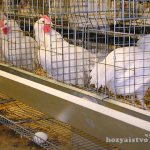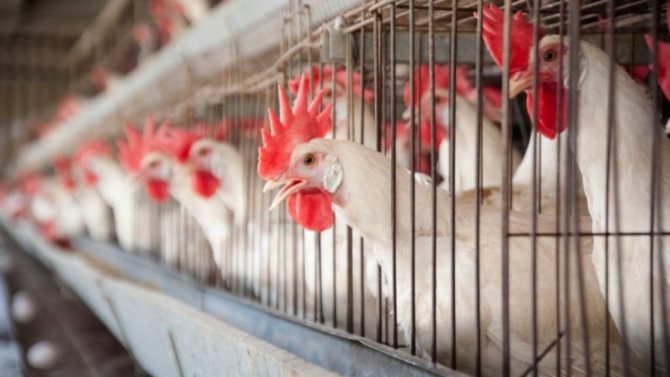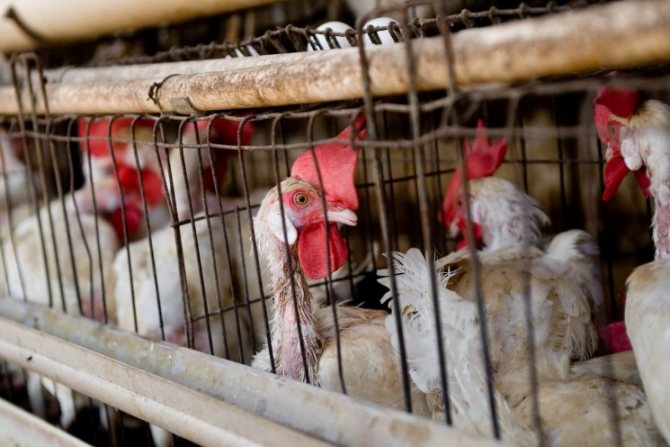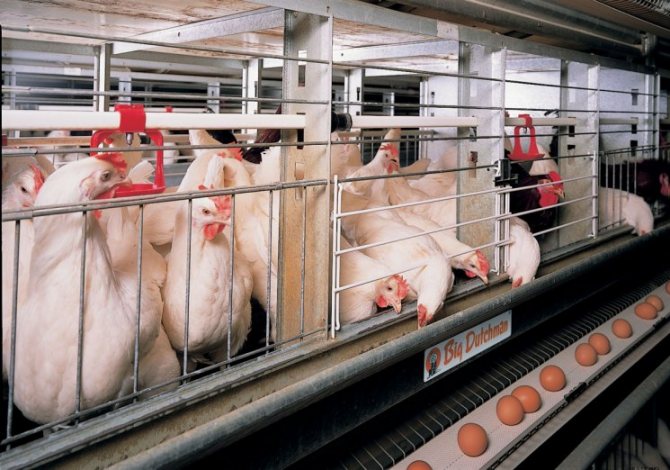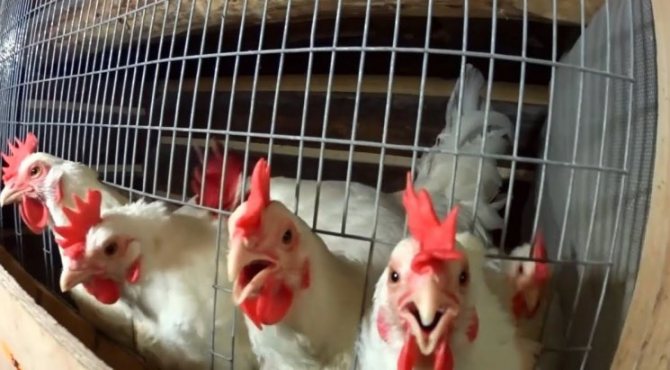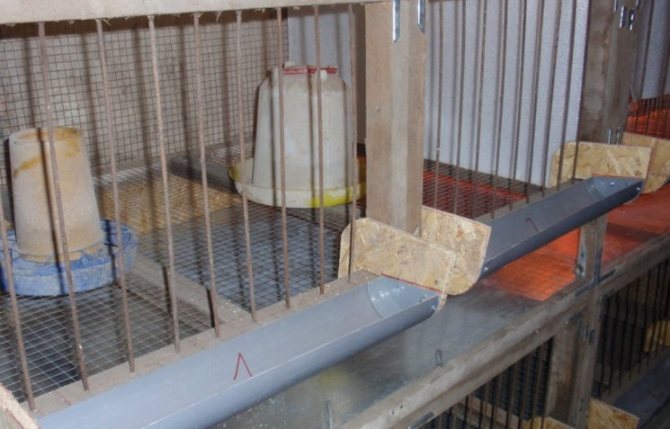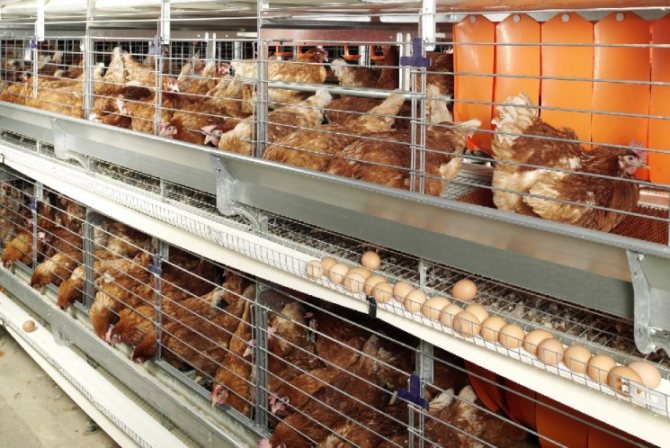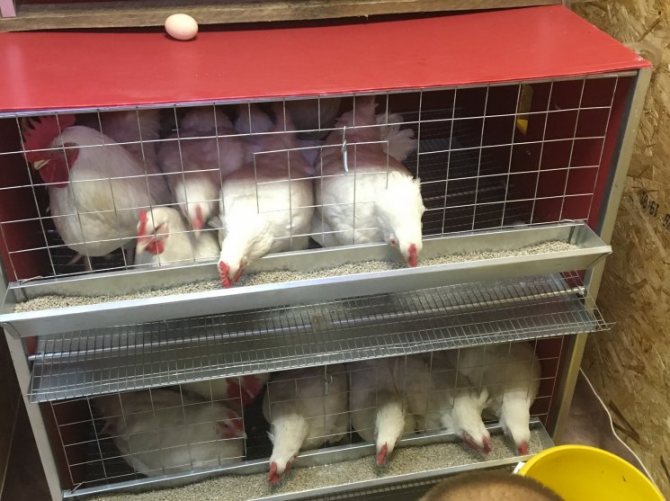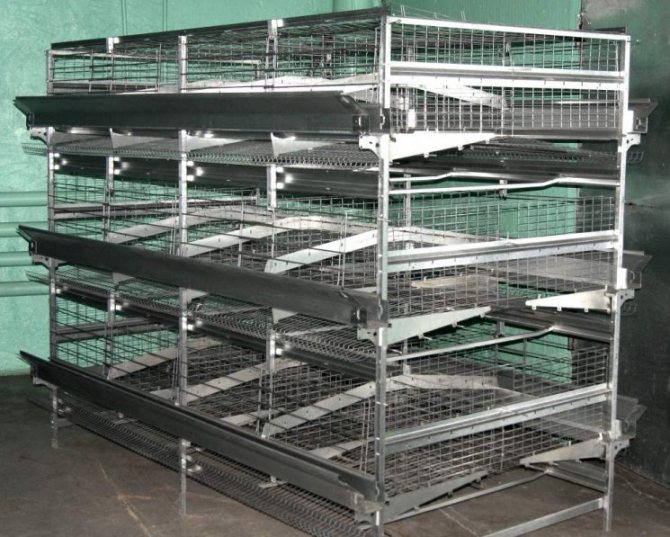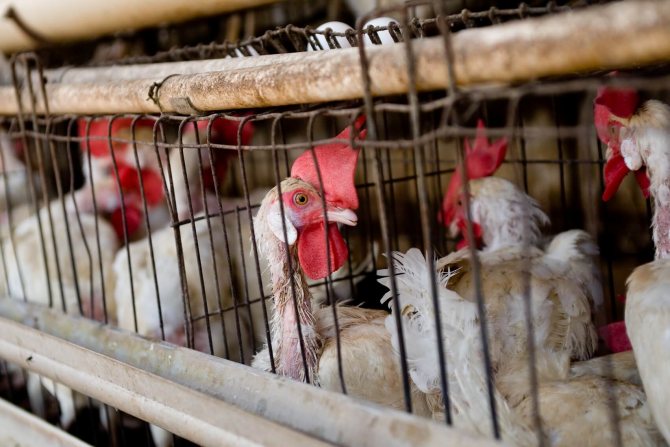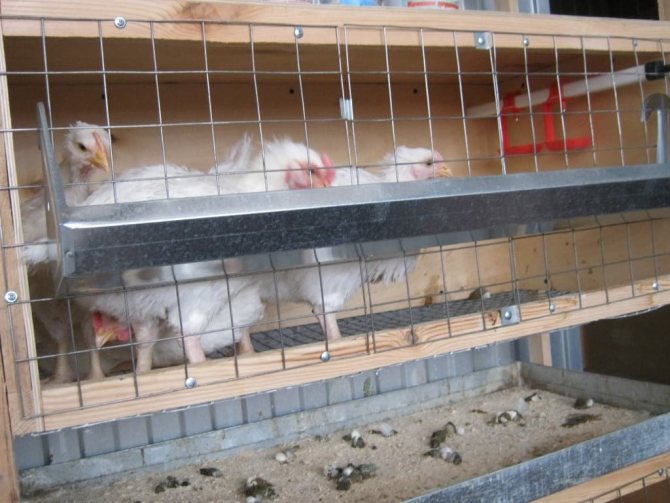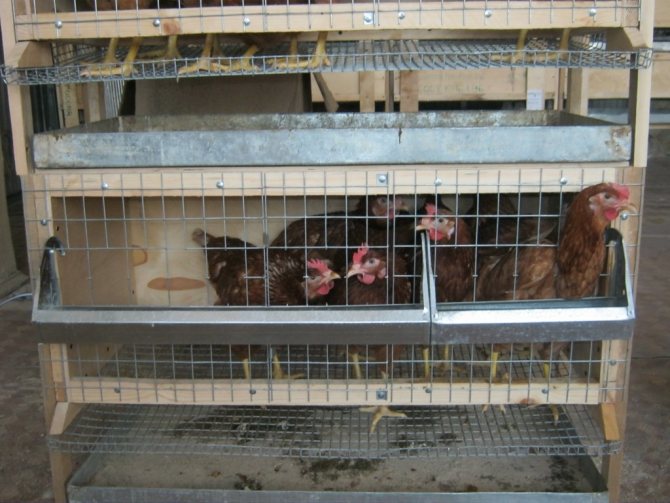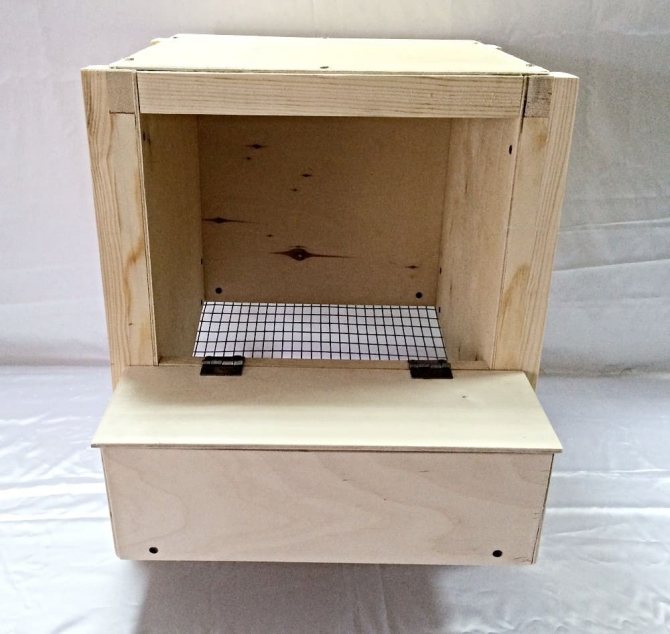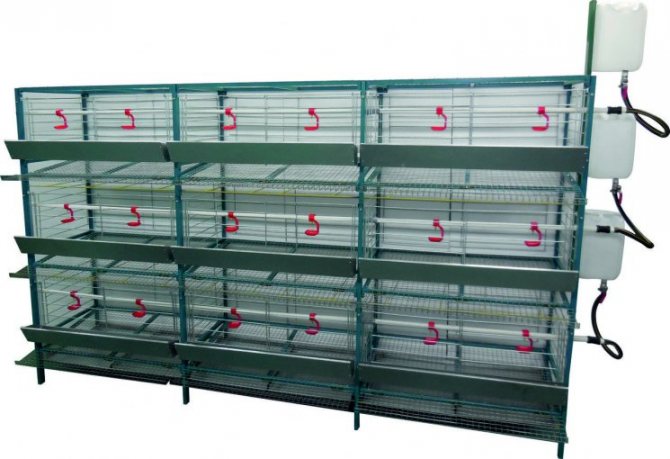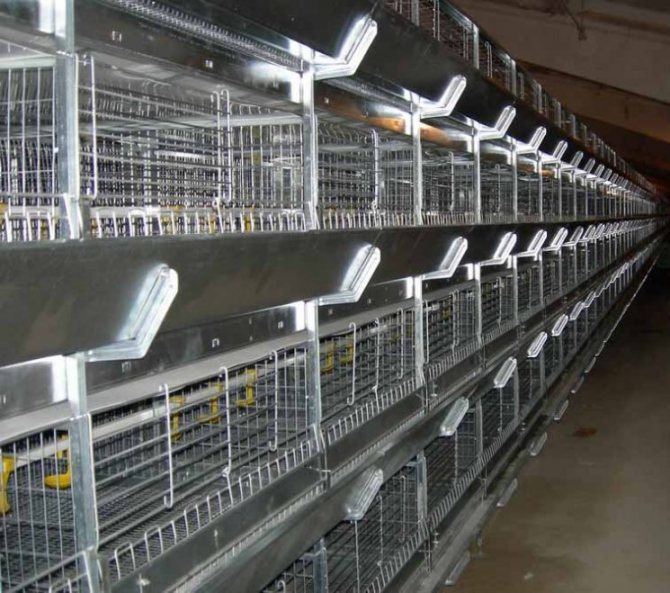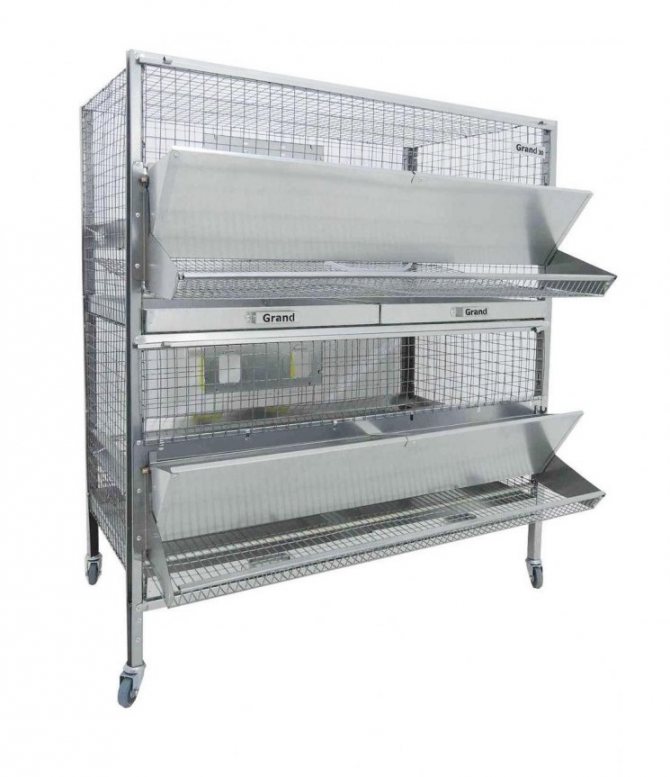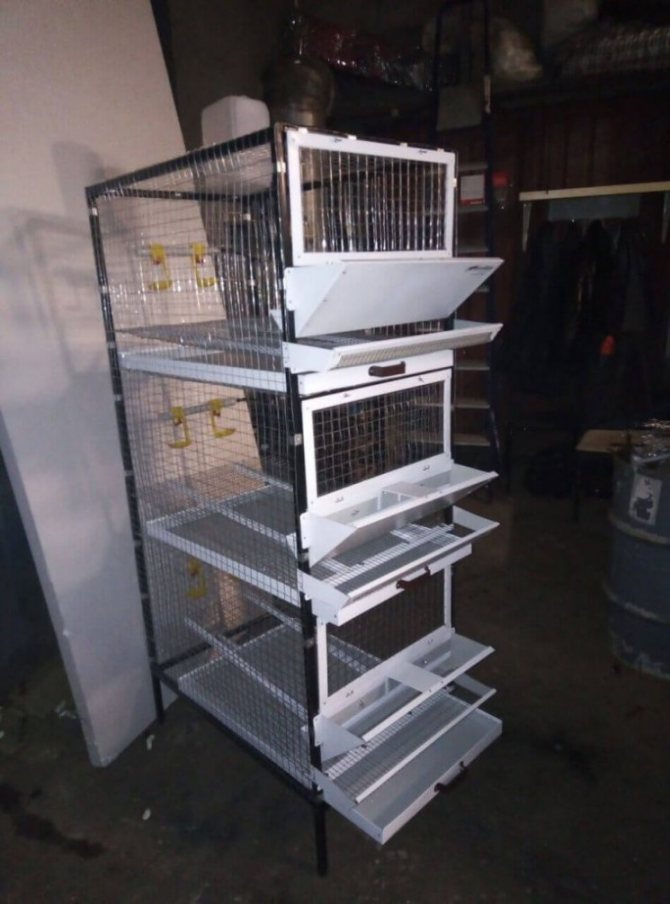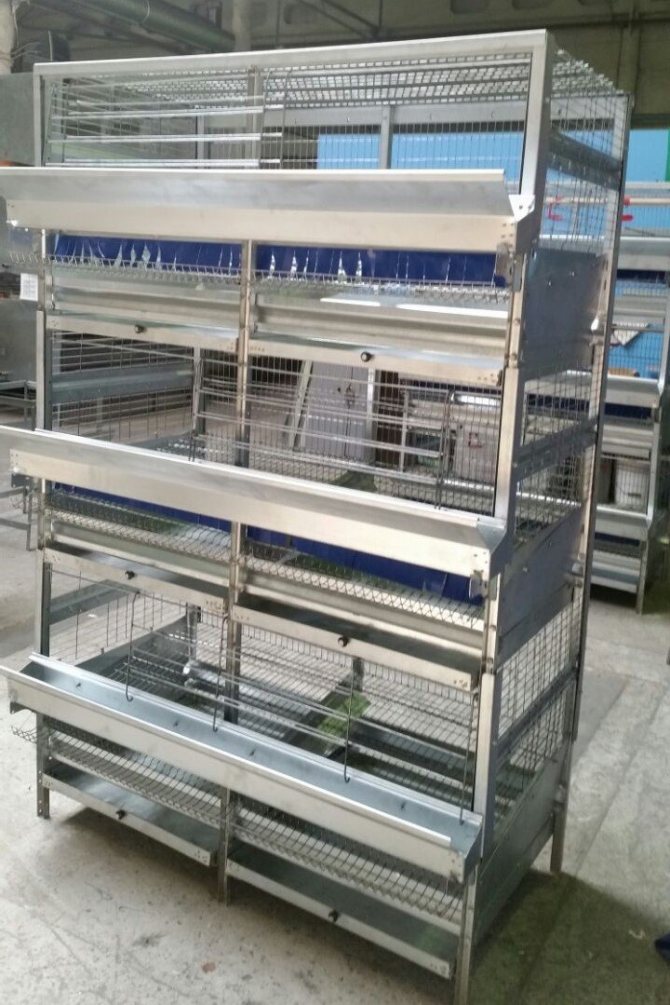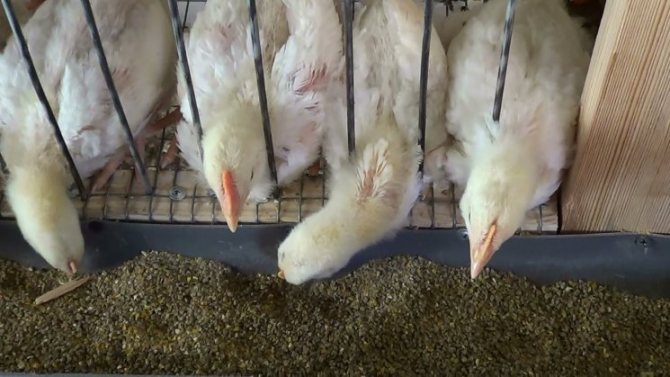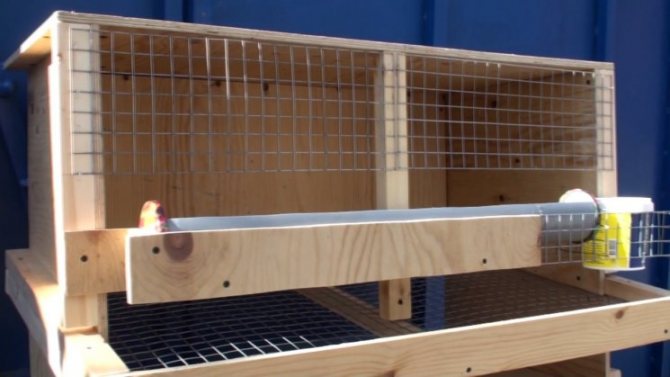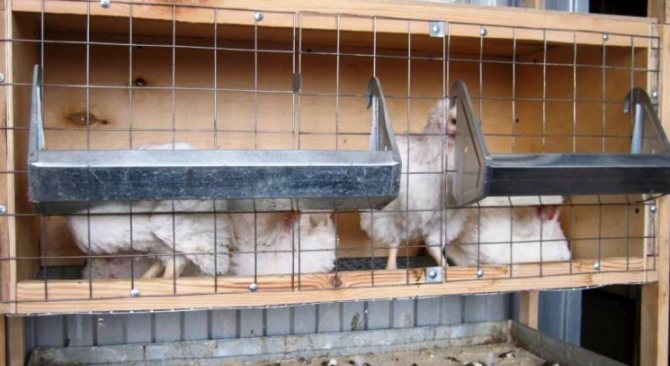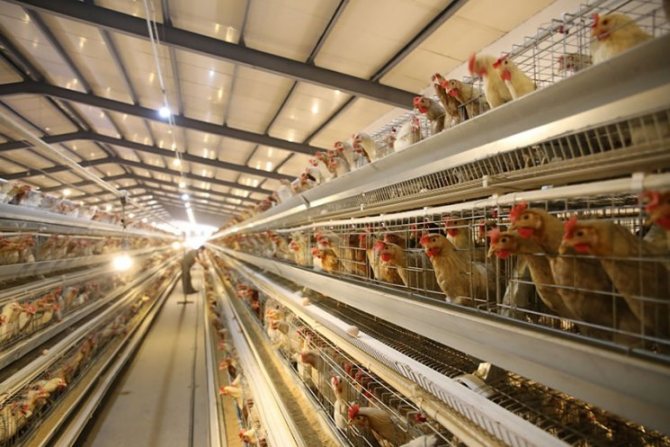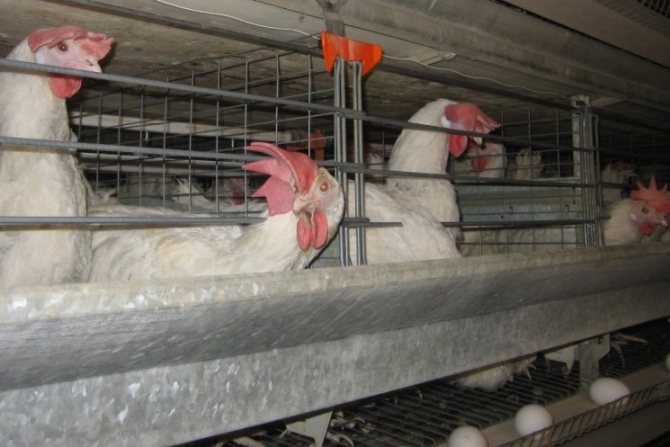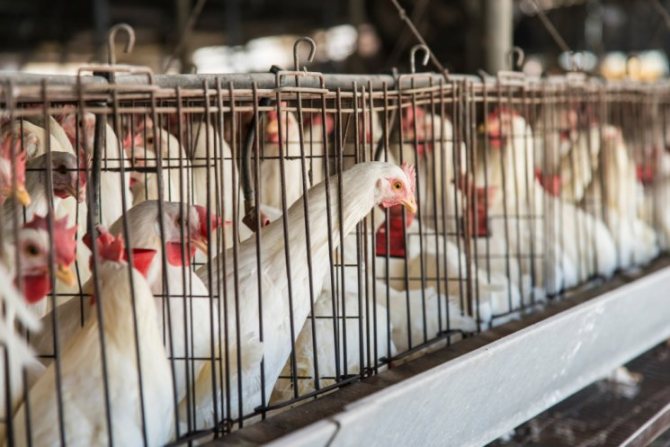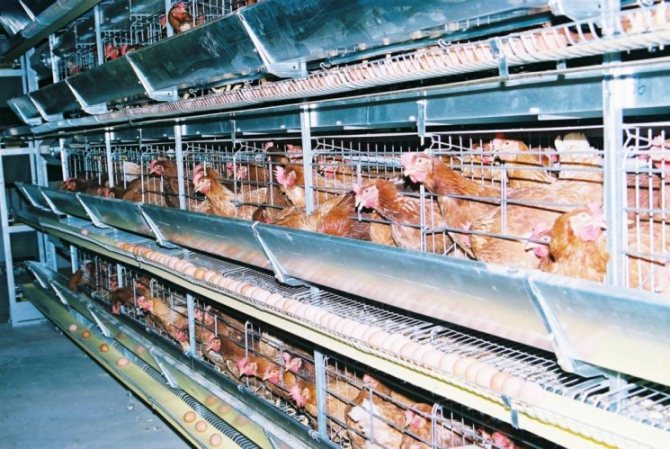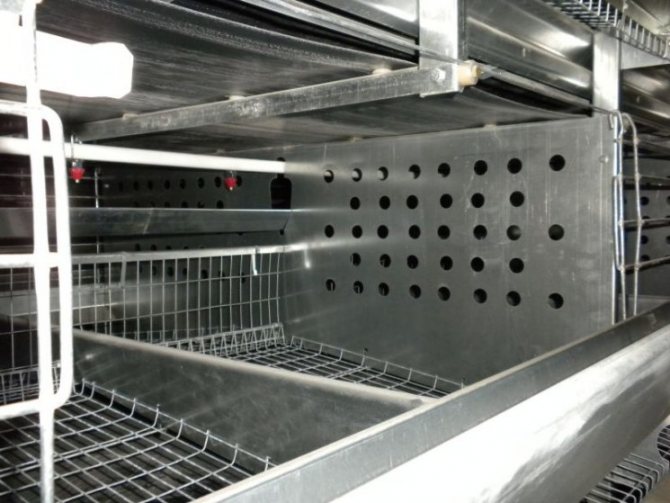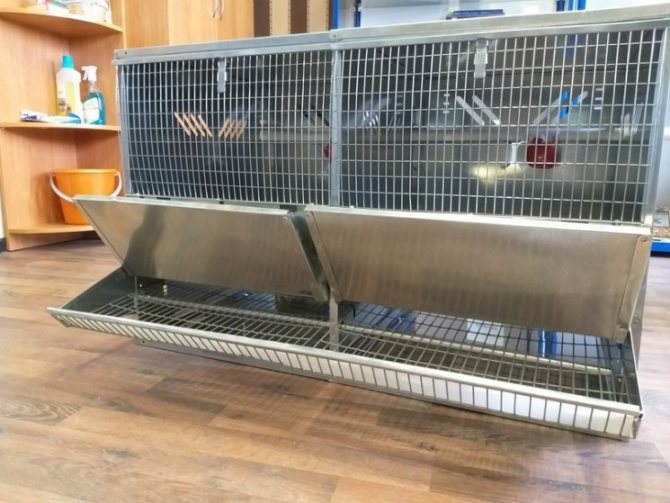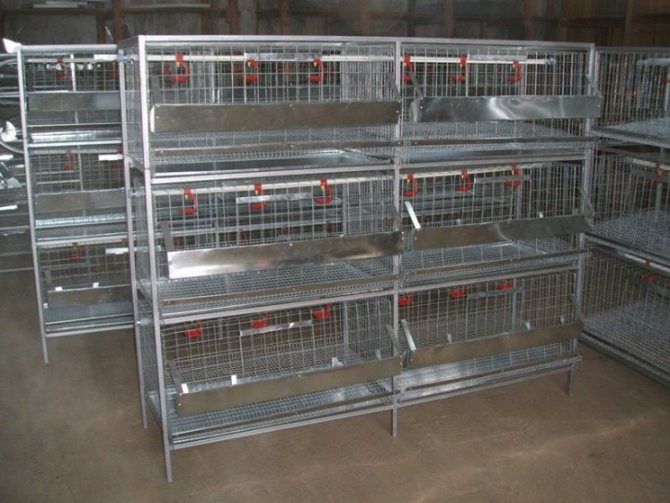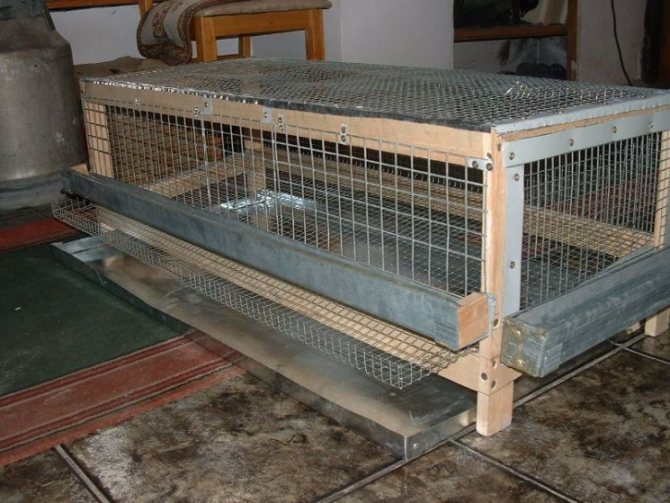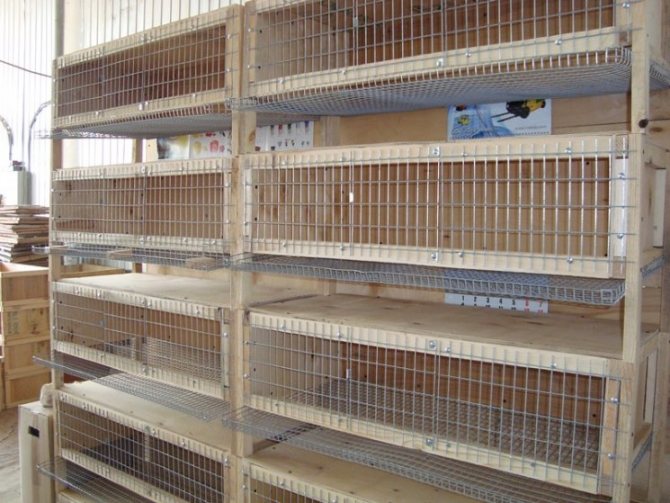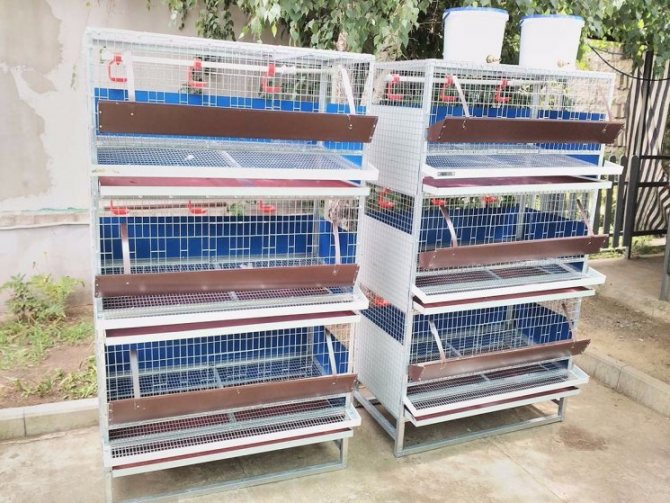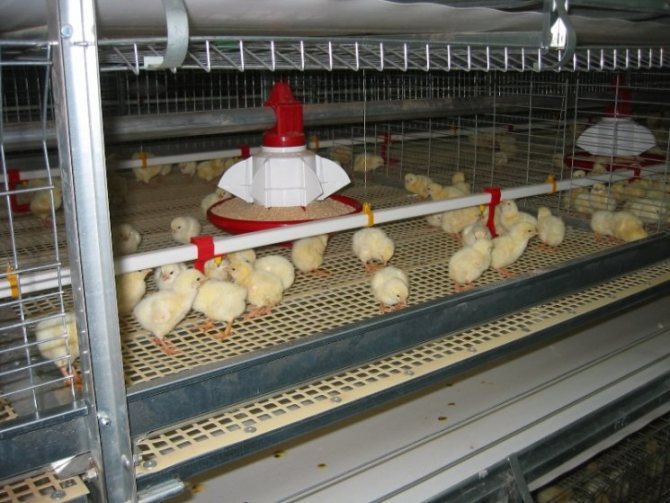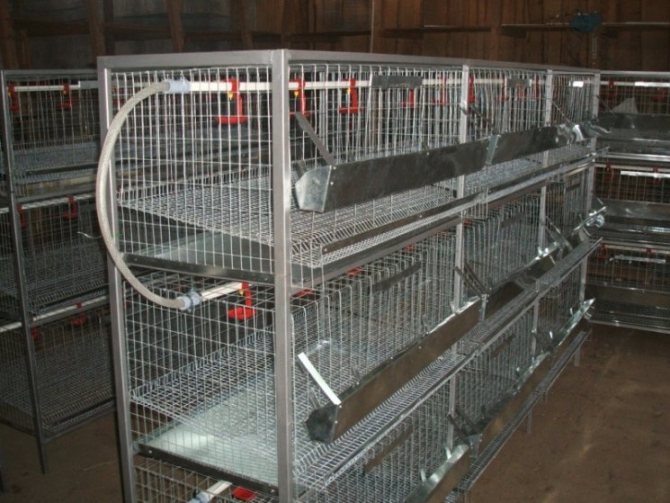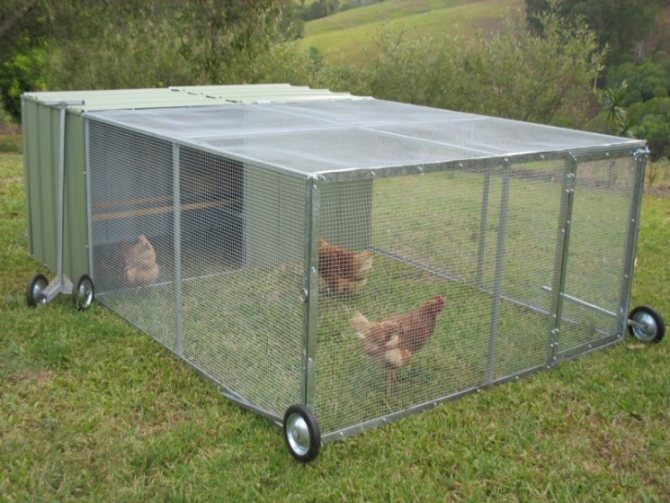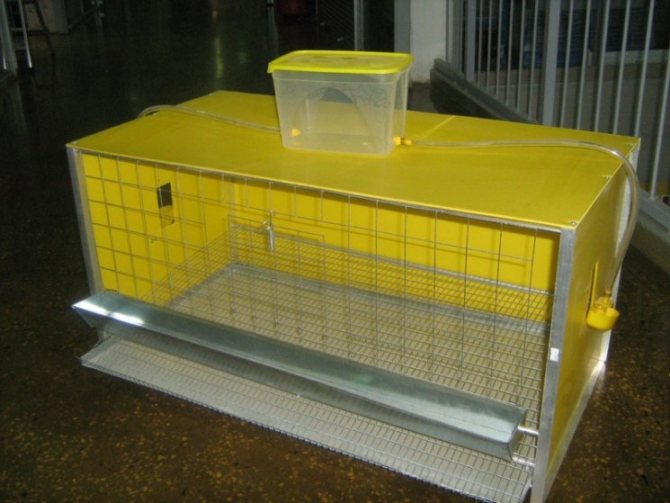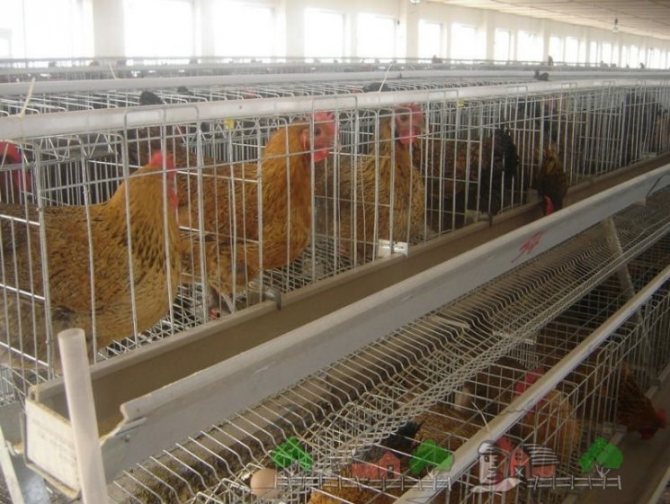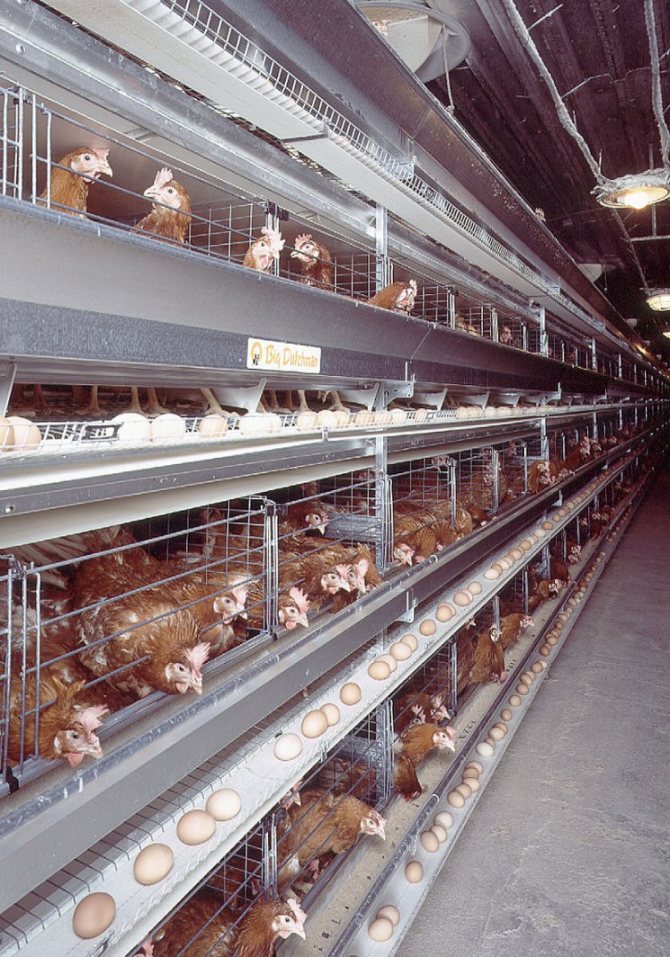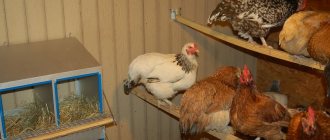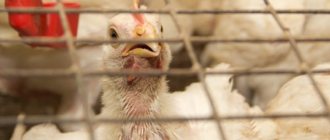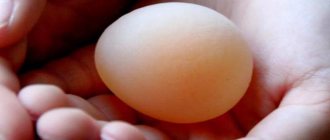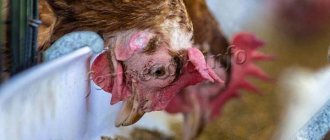Breeding chickens to obtain eggs is one of the most common and quite profitable spheres of personal household management. The use of specialized cages can increase the profitability of domestic poultry farming and minimize labor costs for caring for poultry. Let's take a closer look at homemade cage designs with an automatic egg collection system.
Features of cages for chickens
Not a single farm is complete without keeping one or two dozen hens of the egg-laying breed. Part of the collected eggs goes to the hosts themselves, and part is sold on the market.
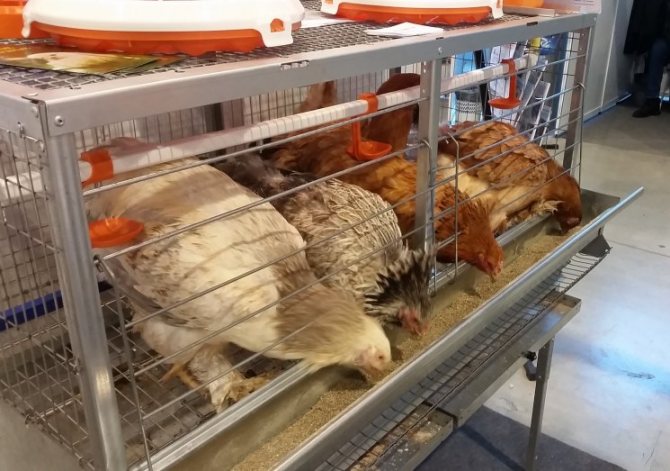
It is important to know that not all cages are suitable for raising poultry. A distinction should be made between cages for broilers and cages for laying hens.
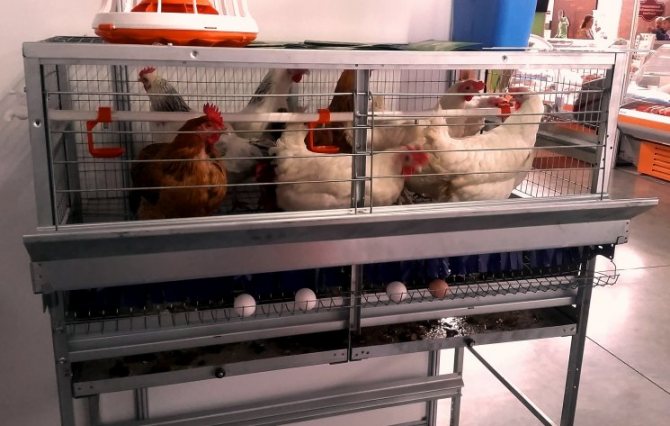

For this reason, if you decide to make a cage for chickens with your own hands, then make sure that the bird is easy and comfortable in it, and you, in turn, will regularly remove fresh eggs as a token of gratitude, sell them and regularly replenish them. your budget.
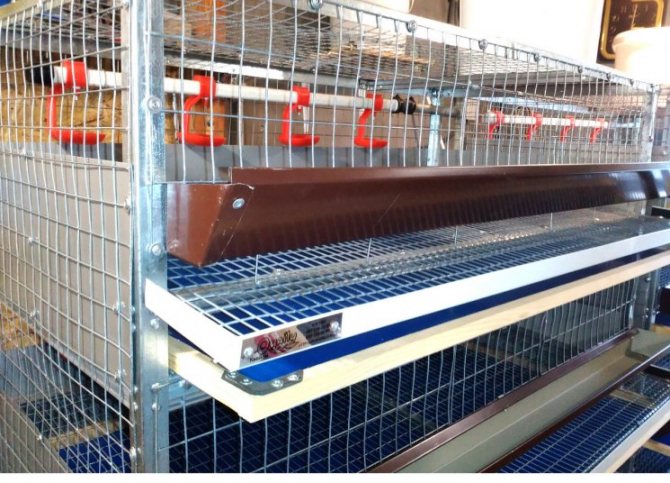

When making a cage with a device for collecting eggs, consider that the eggs, falling into it, do not beat, but remain safe and sound.
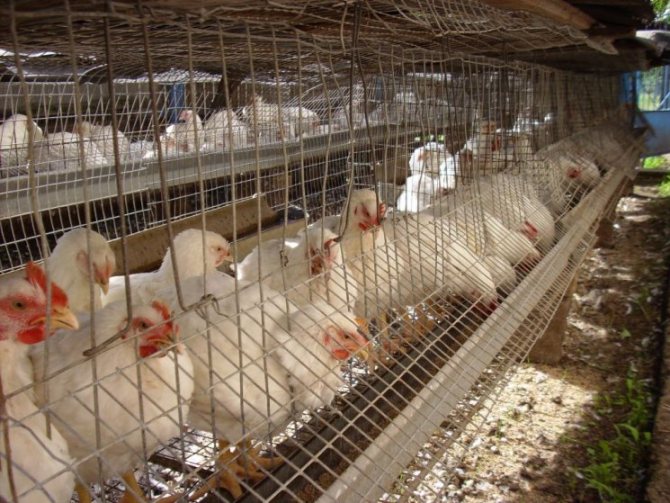

Where to place?
The upcoming cage installation site must meet a number of criteria that are important for comfortable and effective breeding of birds:
- the purpose of the building is to settle birds away from other animals;
- heating system, ready to withstand the temperature regime required for laying eggs: not less than 22 degrees Celsius;
- ventilation system;
- equipment with an auxiliary light source, increasing the length of the day up to 16 hours.
Any deviations in any direction from the recommended conditions will entail very severe consequences: a drop in the productivity of laying hens and the formation of diseases.
How to get a good result?
There are only two ways. You either buy a ready-made cage, or make a cage with your own hands, which you can make as comfortable as possible for yourself. The first option is much simpler, but the second is cheaper, which means that you do not need to be lazy and give preference to it. Having at hand a minimum set of tools and materials, you can easily independently build an uncomplicated structure for your layers.


Dimensions and shape
For the calculations to be correct, it is necessary to take into account the size of the bird that is supposed to be kept.
- Egg. In such an option, the cage should not be made too high, since the size of such a chicken is not very large. It is believed that one bird needs to isolate a space of 20 to 50 cm2.
- Meat and egg. Specimens of meat and egg breeds are characterized by large sizes, and therefore more space will need to be isolated for one individual - approximately 80-90 sq. cm.
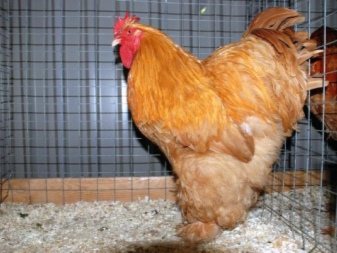

When calculating the parameters of the cage, it is also necessary to take into account the number of livestock, since it is extremely important to maintain an area ratio and prevent excessive crowding in the future. For example, by the number of heads, cells can be:
- for one chicken - 50x50x65 cm;
- for 2-3 layers - 60x100x45 cm;
- for 4-5 hens - 60x120x50 cm;
- for 5-7 hens - 70x150x65 cm.


Where to begin?
You need to start by understanding the size of your farm. It is not at all necessary to plant each chicken separately in its own cage, you can combine five birds. But for this it is necessary to observe the dimensions, otherwise the birds will not rush.
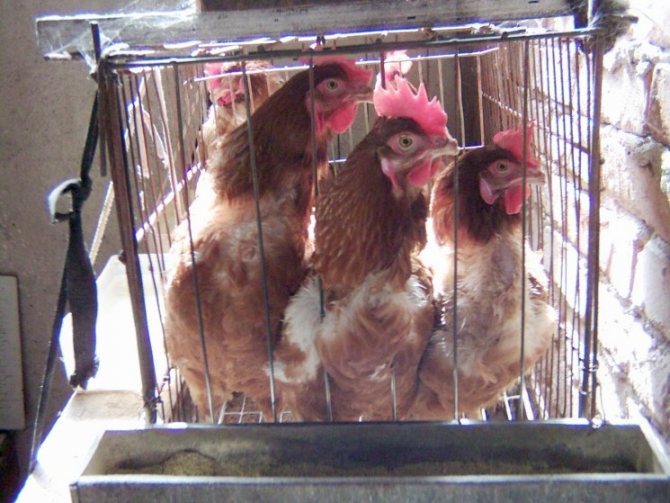

The size of the cage for laying hens directly depends on the number of birds that will be there. Accordingly, the more chickens there are in one cage, the larger the cage itself should be. It will be easier for you to build a cage if you make yourself a blueprint for a chicken cage in advance. For greater convenience, it can be found on the World Wide Web.
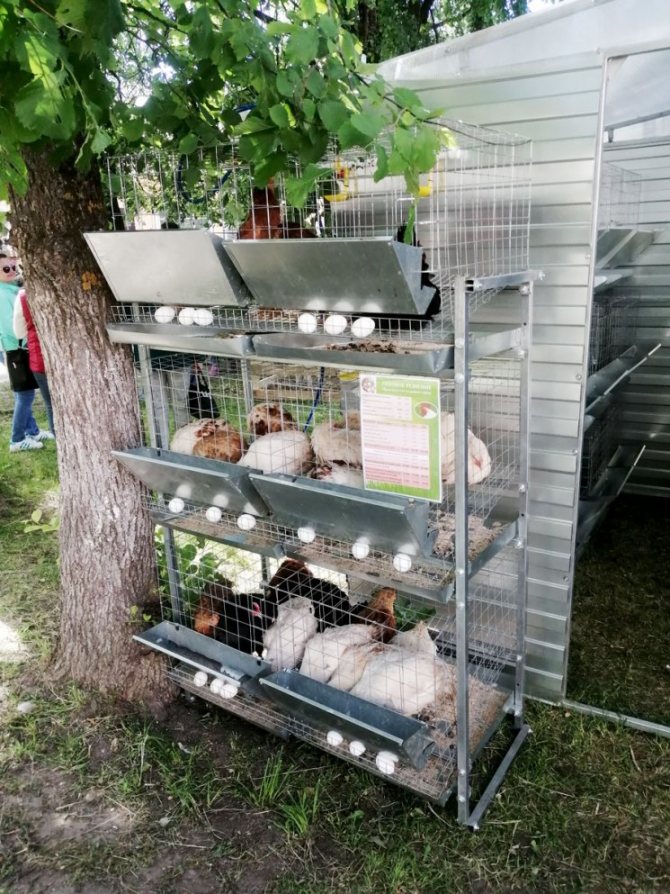

Don't be lazy to choose quality material. The birds will thank you very much for this, and it will be very good and easy for you to work with such materials. If you are making a multi-storey structure, then in addition to quality, pay attention to the strength of the future structure.


The room in which your home-made cages for laying hens will stand, like the cages themselves, should be large, spacious and comfortable. The owner of the poultry farm should also be comfortable here. You should be able to enter here not on all fours, but calmly move in full growth. You won't argue that it will be much more convenient to collect eggs, feed your feathered friends and clean the cages? For this reason, when starting to make your own cages for chickens, think about yourself.
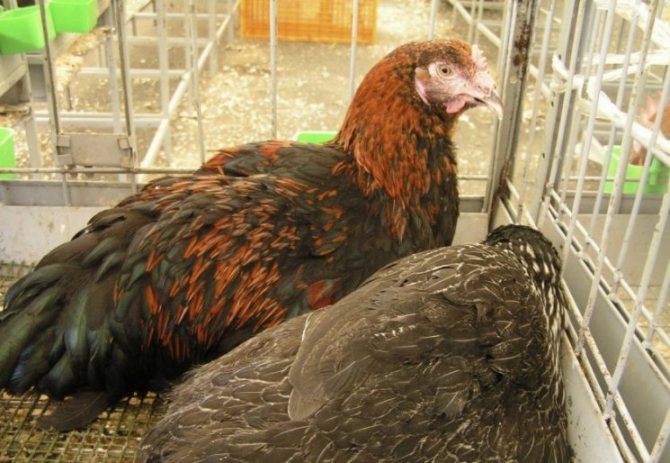

If you plan to move frequently from one place to another, then your homemade cages should be thought out and adapted to travel. By the way, such cages can be taken out into fresh air, which the hens simply need to ensure high productivity.


Chickens are known to be very comfortable at a certain height from the ground. Therefore, you can safely raise the cages above the floor, but do not overdo it, since layers are still cowardly creatures, and any slightest stress affects the number of eggs laid. And your task is to get a high and stable income, and not vice versa.
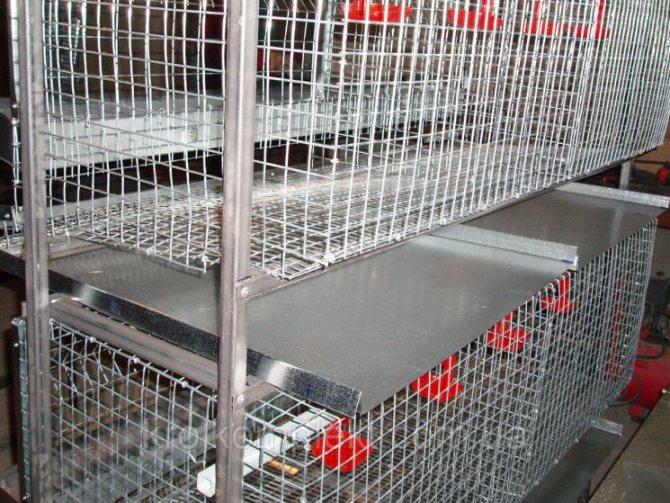

Cages can be arranged in a multi-tiered manner and periodically swapped. This will make the chickens more comfortable.
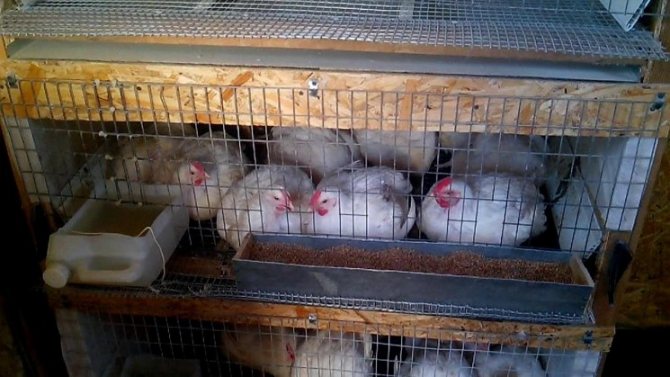

Don't forget to light up your hens. After all, even from the school course in biology, we remember that the number of eggs will directly depend on the length of daylight hours. The longer it is, the greater the yield of eggs you can collect and sell. This means more money to put in your farm piggy bank.


Do not neglect various dietary supplements, but in no case use GMOs. If you decide to do this, you can easily lose most of your customers.
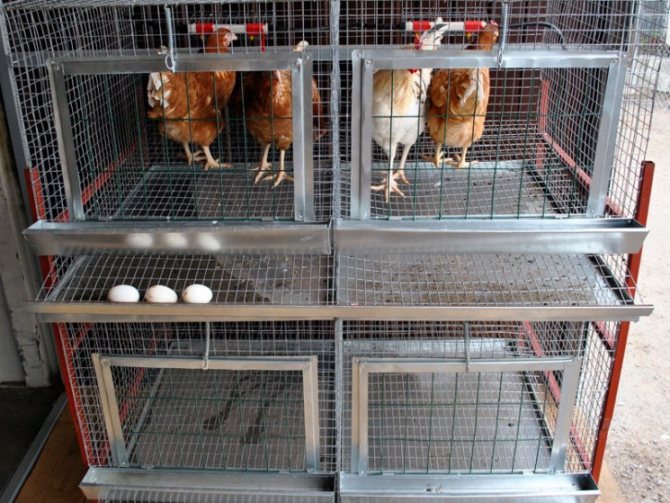

What to feed
The choice of the diet of birds kept in a cage is approached more carefully: not only the indicator of their egg production depends on this, but also their health in general. The correct chicken diet should consist not only of carbohydrates, but also of proteins (10-15%), fats (5-6%), fiber, and minerals. It is recommended to choose specialized friable feed, consisting of wheat, cake, vegetable fats, vitamins and minerals.
In addition, birds should always have clean water in the public domain.The optimal volume for 1 individual is 0.5 l. Since there is no walking for chickens, it is necessary to take care of the presence of greens, vegetables and fruits in their diet. It is worth adding chopped grass, food waste, vegetable peelings and weeds to the compound feed. Adults eat twice a day. Serving size - 120-160 g.
Nutrition of chickens with cage keeping: video
Cage keeping is often used not only by poultry farms, but also by private farmers who are unable to organize a place for walking birds. When creating such conditions for growing chickens, carefully read the requirements for the location of the cage, the density of birds in them and the indoor microclimate. It is also worthwhile to take a responsible approach to the choice of diet: in addition to high-quality compound feed, add greens, vegetables and fruits to the daily menu.
What to make of?
When choosing materials for self-manufacturing of cages for hens of egg breeds, do not ignore the safety of you and your layers, as well as hygiene, which is indispensable for any desire.
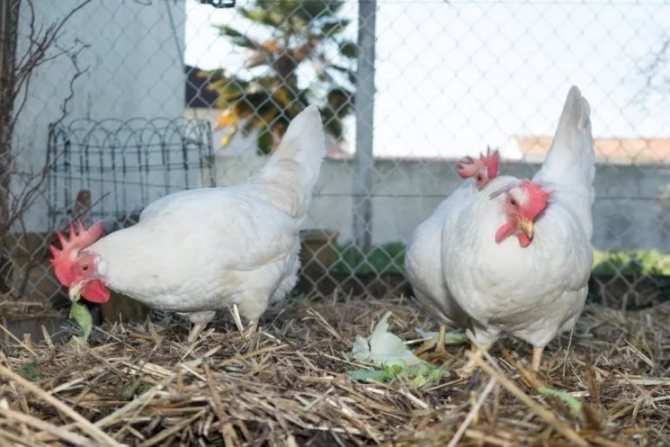

Your cage should be designed to be easy and simple to clean and sanitize. In addition, it should not in any way injure the inhabitants. Be sure to consider the air circulation system. Otherwise, there will be nothing to trade.
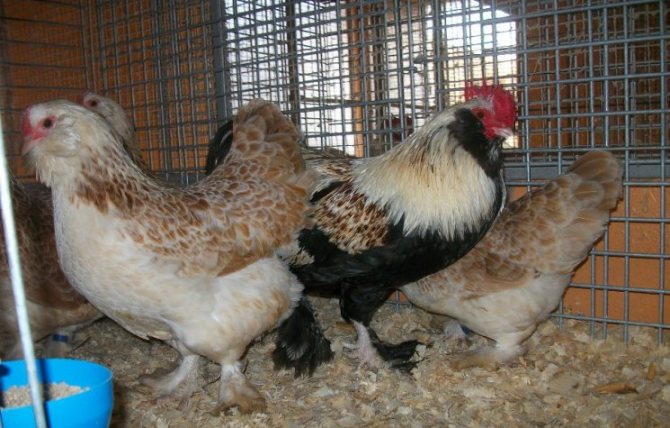

Try to make the frame of the cage made of wood. But the walls are necessarily made of something galvanized. There should be wide openings in the feeding and drinking areas to prevent the chicken from getting stuck in its head.


But you can make the floor from a regular mesh or lay straw. The main thing is that the hen does not experience discomfort when moving. Chickens often rub or prick their legs, which subsequently become inflamed and lead to various diseases of the bird.


Additional tips for beginner poultry breeders
With little experience in keeping chickens, poultry farmers often face common problems. To avoid mistakes, you should familiarize yourself with the recommendations for breeding birds.
Cellular fatigue
As a result of constant presence in confined spaces, some chicken species may develop cell fatigue syndrome. The consequences of the syndrome are muscle paralysis and osteoporosis. For treatment, the birds are given dietary calcium and the length of time they spend outdoors.
Panic
After placing chickens in a closed cage, they may experience panic, which manifests itself in the form of restless behavior. In this situation, you need to gradually accustom the birds to new conditions so as not to create stress.
Cannibalism
Cannibalism is a pathology in the behavior of chickens and consists in an aggressive attitude towards fellow chickens and damage to eggs. To avoid the negative consequences of cannibalism, aggressive individuals should be raised in separate structures.
Broken wings
The collision of birds with various obstacles often leads to the fracture of the wings. It is not recommended to treat fractures on your own, as this process requires special skills. If the wings are broken, you should seek help from your veterinarian.
Rickets
The reason for the development of rickets is the unbalanced diet of birds. The main control measure is to revise the diet. As a result of rickets, the elasticity of the bones can increase and they cannot support the chicken's weight.
Get creative
If you are a creative person and regularly find inspiration and ideas, then do not be afraid to embody them anywhere and everywhere, even in homemade laying hen cages.
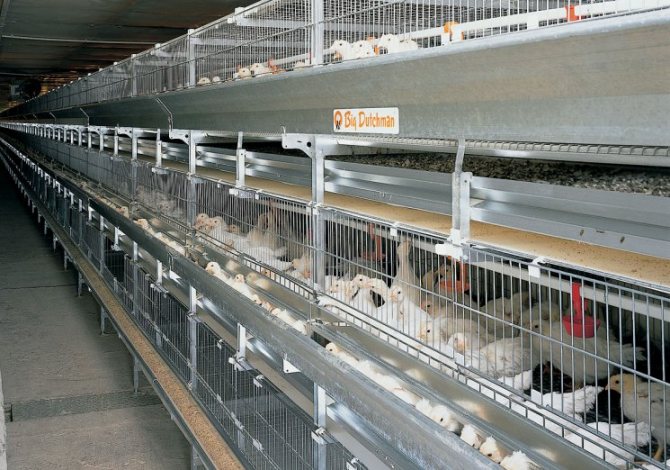

Today the Internet is the most powerful means of distributing advertising, and if your potential buyer sees on the network not simple cages that contain chickens, but original houses or even terem houses, then they will want to buy eggs not from your neighbor on the left, but from you. And the likelihood that word of mouth will work is much higher.
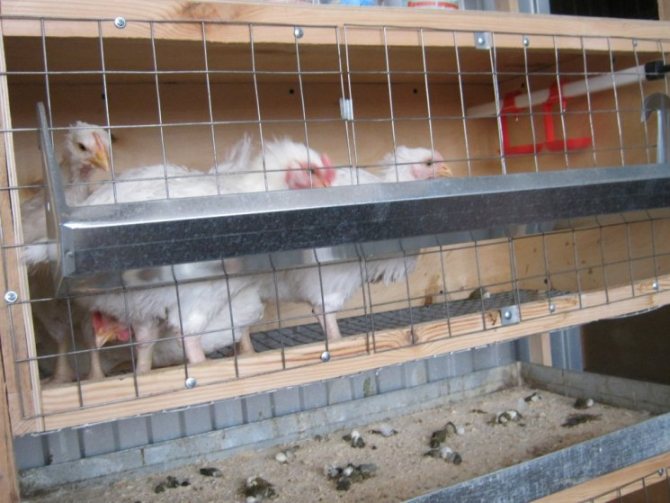

When deciding to use paint, give preference to those brands that do not contain volatile substances and are odorless. Involve your family members to create a beautiful cage.
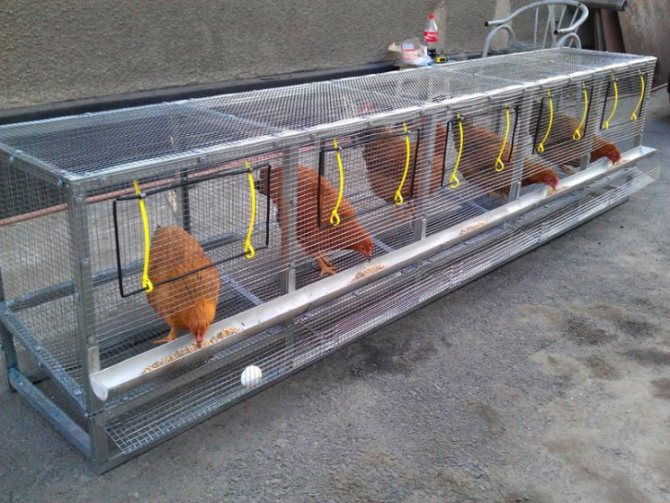

Children will be happy to make their contribution, a small contribution, by painting the chicken house.They will make crafts that can be put side by side, or they may offer an original version of the drinker or feeder.
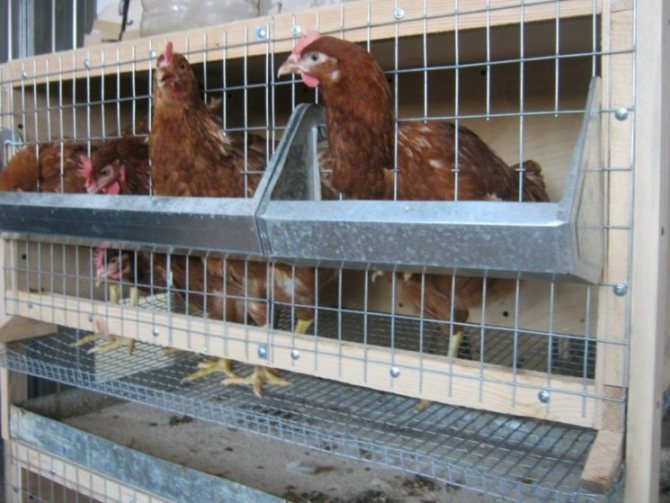

By the way, if you do not have outstanding creativity or imagination, then you can easily find and see photos of chicken cages on the Internet and take any idea from there.


Choice of materials
Female cages can be made from the following materials:
- Wooden bar... The simplest construction that can be assembled at home is considered to be wooden. A frame should be cut out of a timber of a suitable size, and then a metal mesh should be fixed on its front wall with large cells. You can close the cage with a sheet of plywood or sheet metal. The back wall is best made of plywood, but it is desirable that it be mesh for good air exchange. It is better to make such structures small, otherwise they will not be strong enough. In this regard, this option is not suitable when installing cells in tiers.
- Metal profile... Structures made of such material are considered more reliable. Their frame needs to be welded, and then the mesh is attached to it. Galvanized iron should be used as a mesh. The finished cage will be durable and hygienic, since the metal does not rot and is not afraid of mold. It should be borne in mind that such structures are non-separable, therefore, the frame must be made immediately, counting on the construction of several sections.
For the manufacture of the cage, meshes with a metal or wooden frame are used, since these materials are more practical in terms of hygiene and durability.
Photo of cages for chickens
Please repost
0
Materials (edit)
The main conditions for establishing cage breeding of chickens are safety and hygiene requirements. The finished cage must be adapted for cleaning and sanitizing. In addition, it must exclude any injury to the birds during use. It is necessary to plan the free space in such a way that so that there is optimal transparency of light and air masses.
The skeleton of the cage is made of a wooden bar or metal profiled material. The walls are made of zinc-coated material or non-corrosive mesh. For the area of attaching the drinkers and feeders, the hen's head must pass freely through the holes. The floor needs a net with a small cross-section so as not to impede the movement of the bird.


You will need the following tool:
- screwdriver;
- angle grinder;
- saw;
- pencil;
- tape measure, square and level.
If the structure is iron, an electric welding unit will be needed. Having prepared all the source materials and tools, you can start creating the structure.
What is it for?
The cage keeping of laying hens to obtain a marketable egg has its advantages and disadvantages. Positive factors include:


complete mechanization of the process of feeding, drinking, cleaning cells and obtaining the product itself (that is, eggs);- space is economically consumed, since even in a small building several cell blocks can be compactly concentrated, which makes it possible to maintain a fairly large number of livestock;
- it is easy to create optimal conditions for the comfortable life of the bird - artificial lighting, ventilation, heating;
- the amount of feed is controlled, which also reduces the cost of the final product;
- control over the condition of the bird and the procedure for conducting a veterinary examination, vaccinations, and so on are greatly simplified.
However, along with a fairly extensive list of advantages, this type of content also has some disadvantages. In this regard, the following factors should be highlighted:

